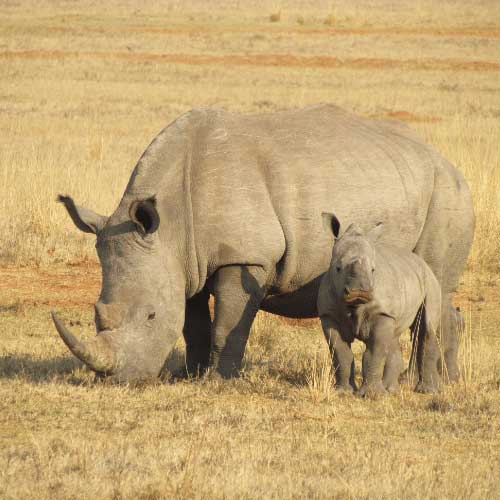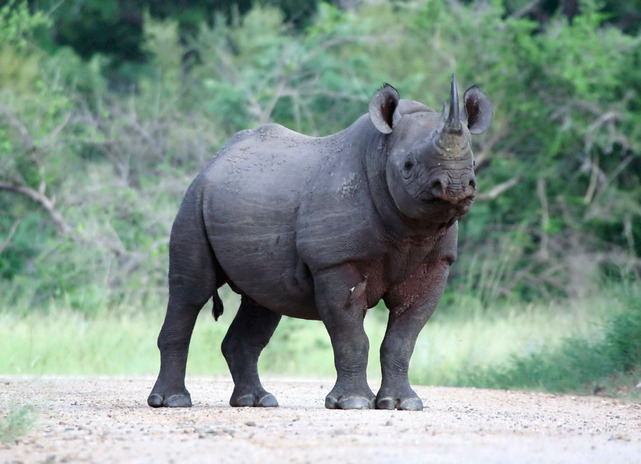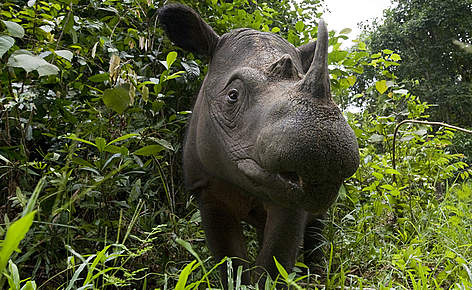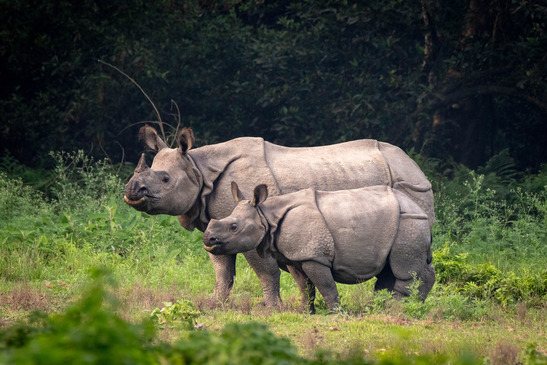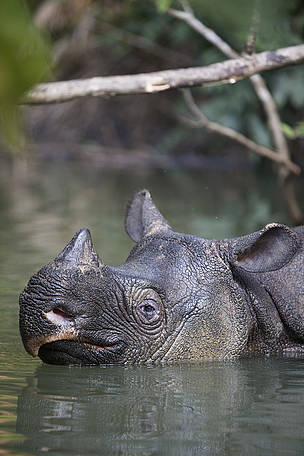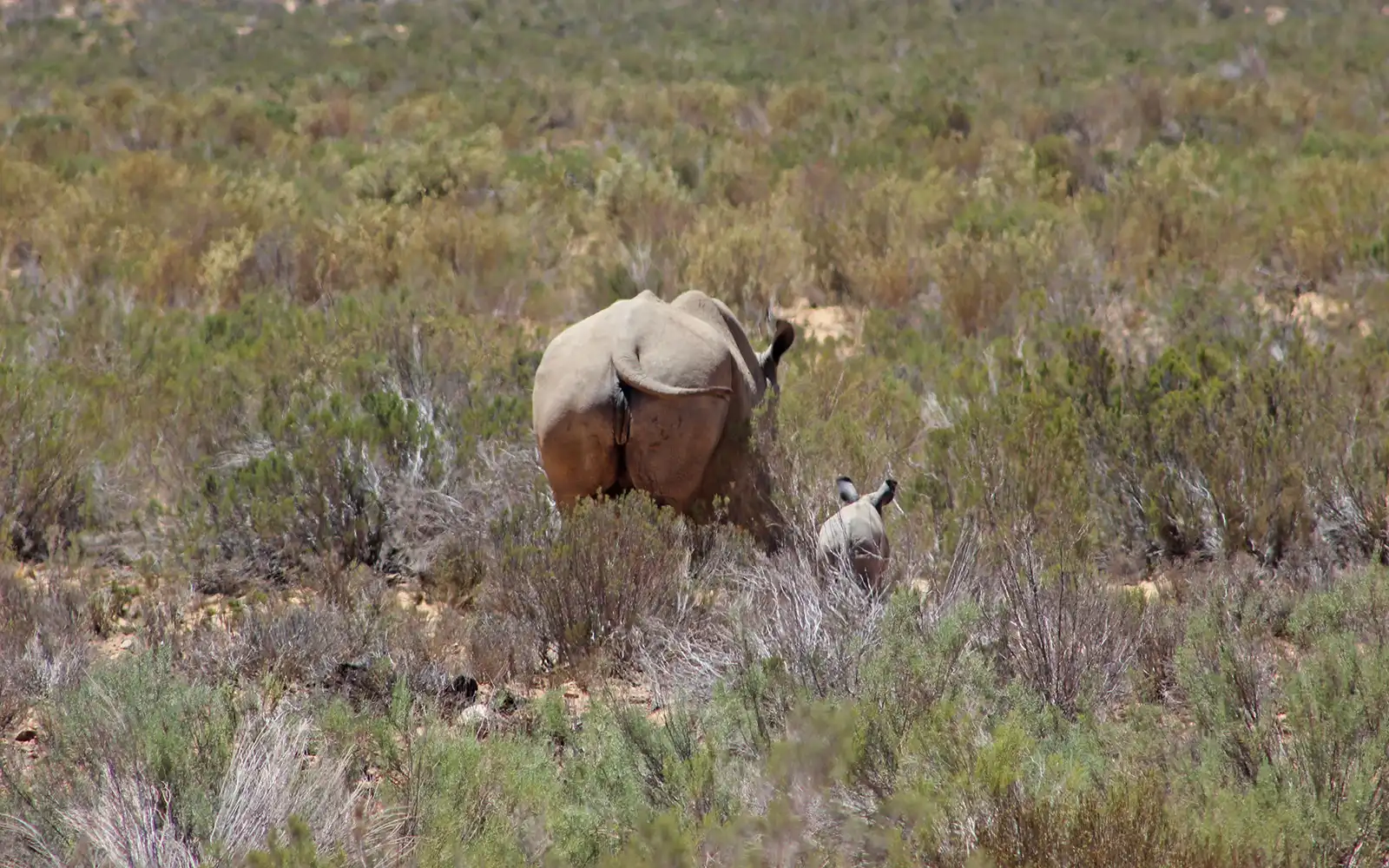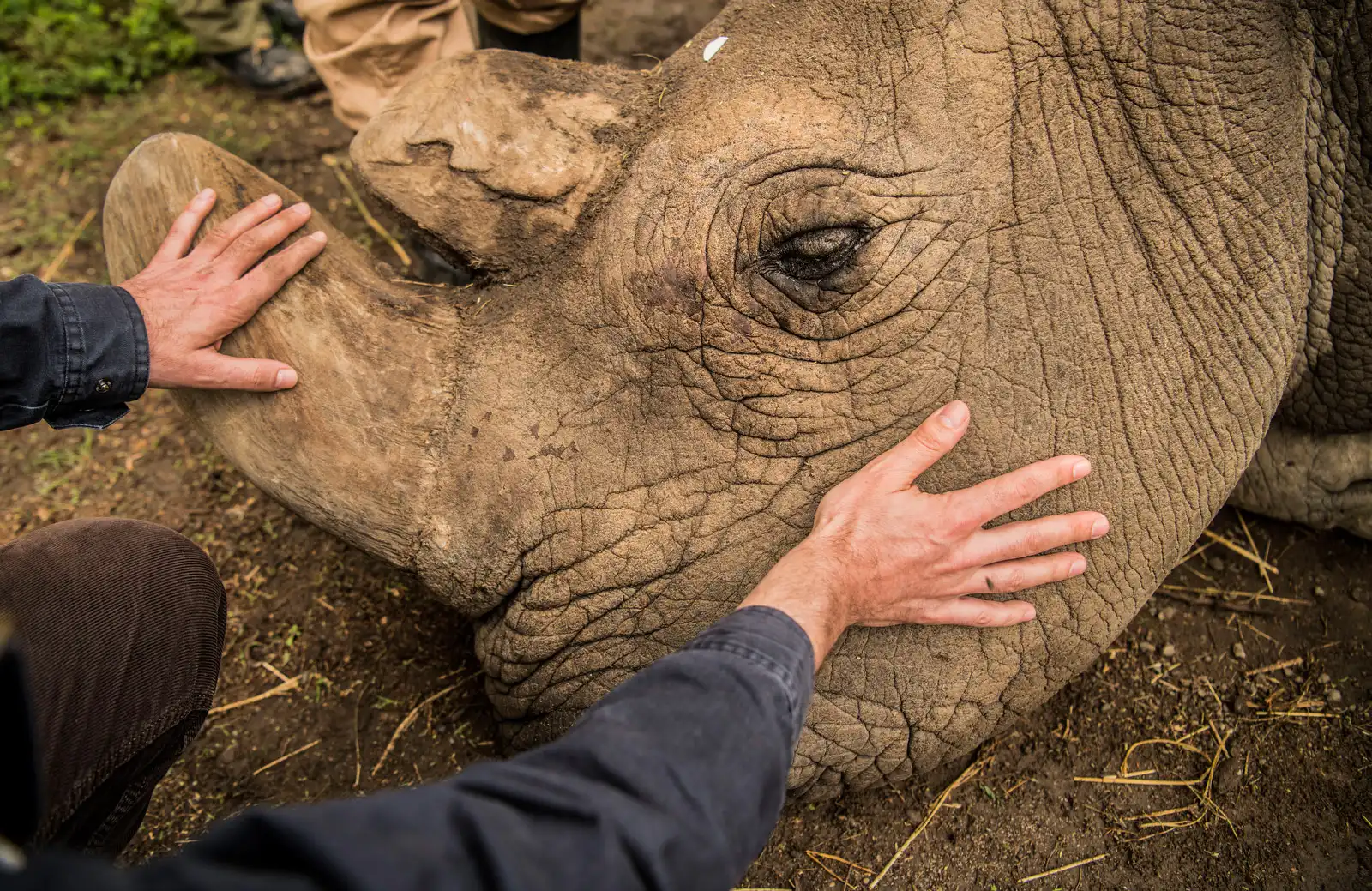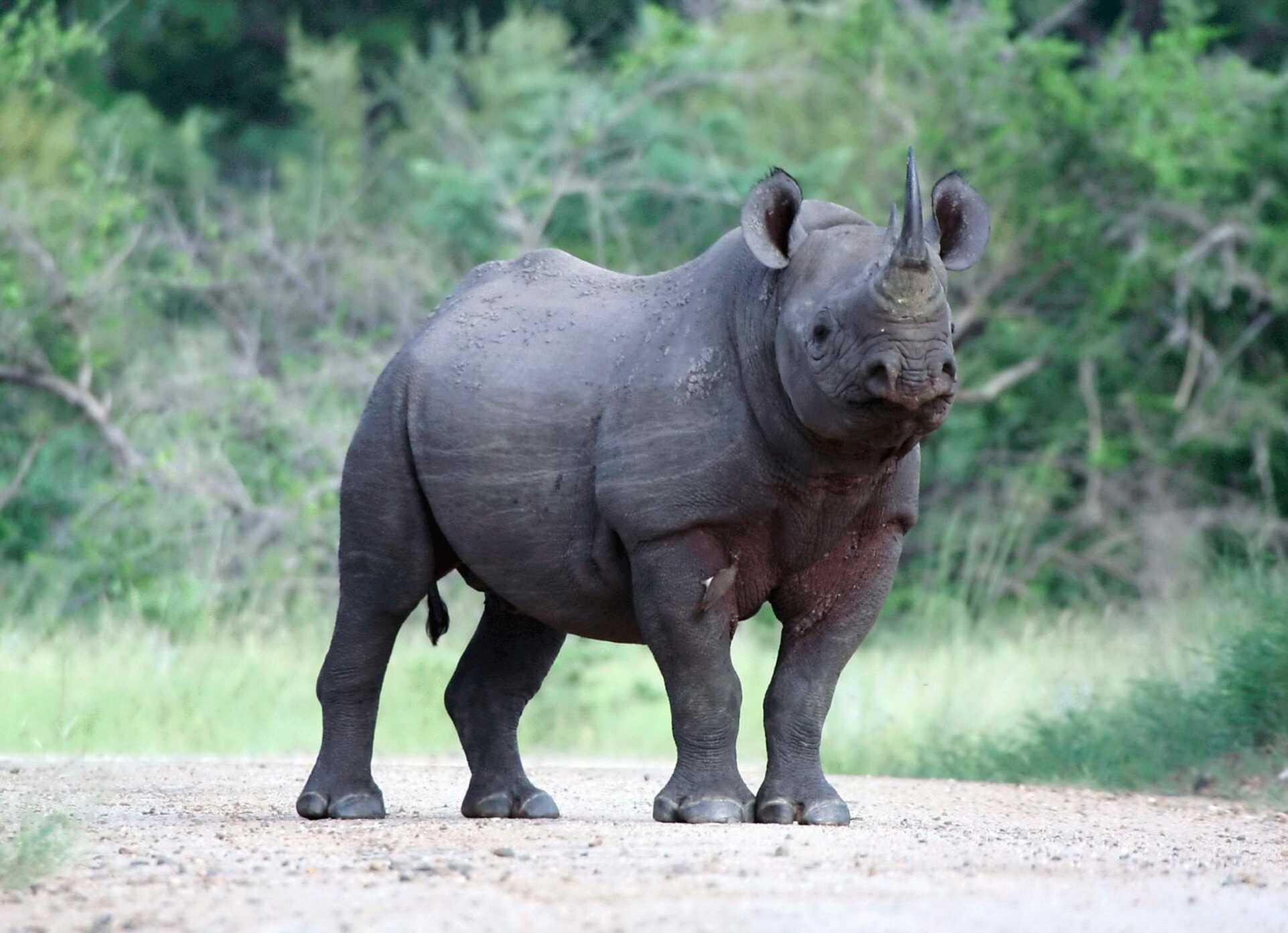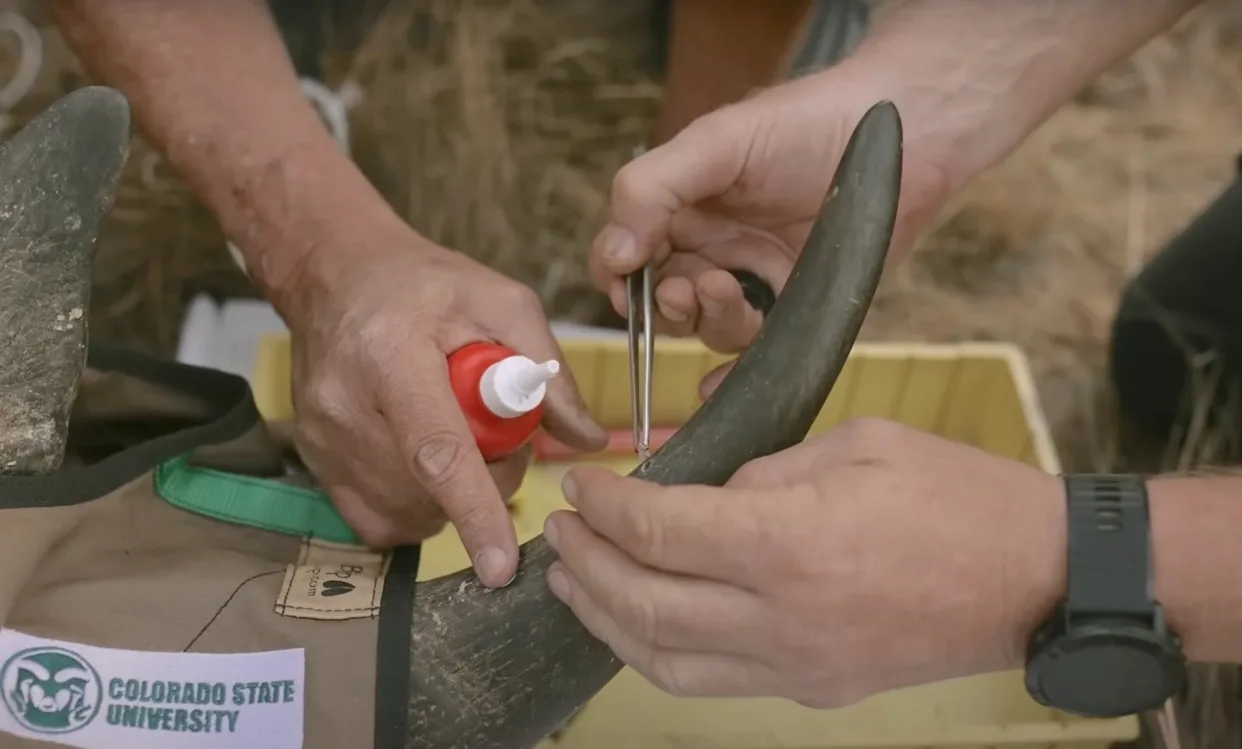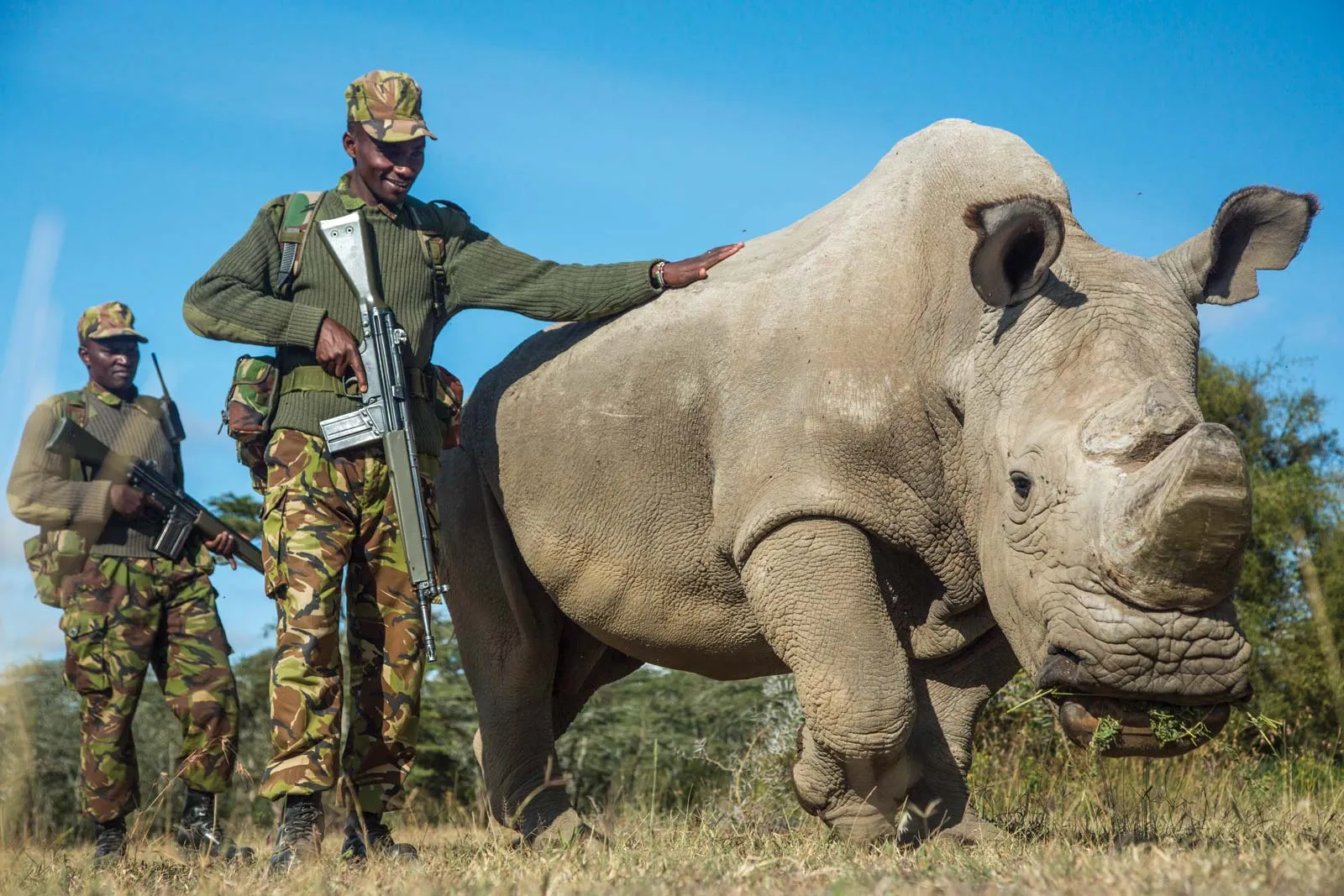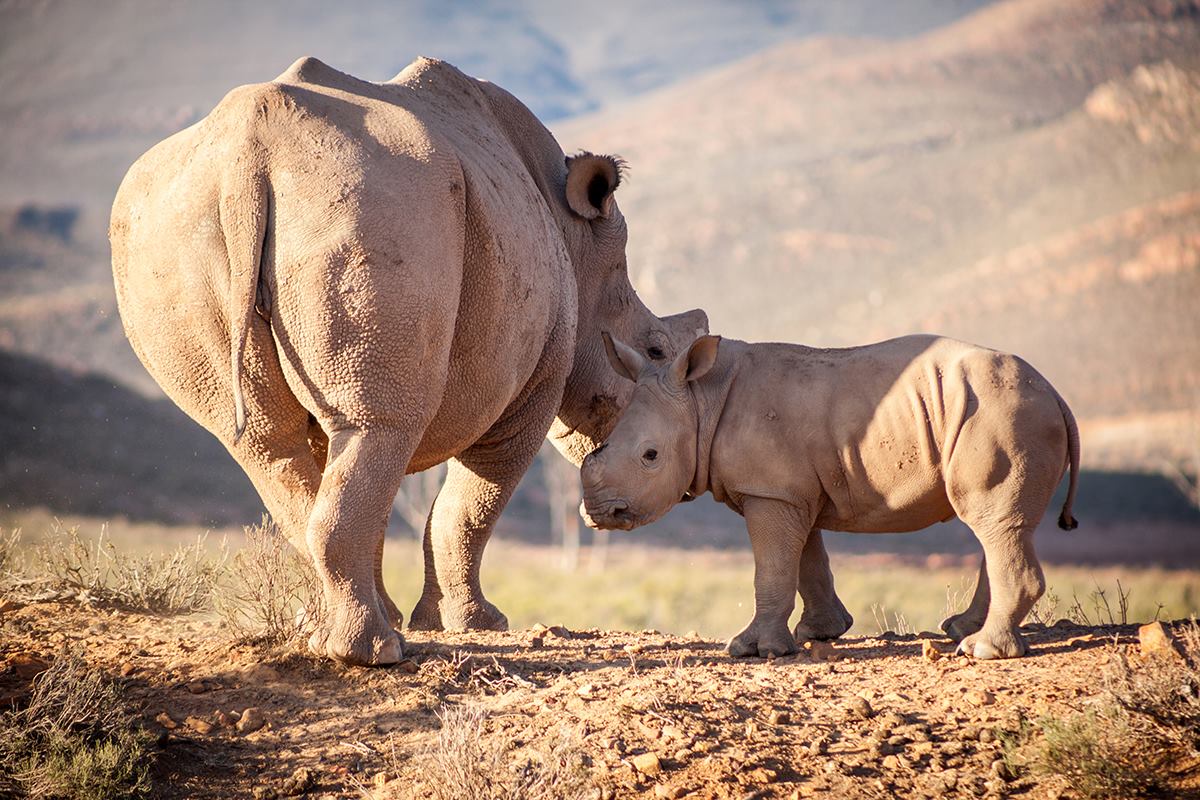Why Save the Rhino?
Rhinos are much-loved herbivores around the world, with their armoured hides, stoic expressions, and prehistoric-looking horns, they have sadly become an emblem for wildlife and conservation crisis in Africa as their numbers continue to be decimated by poaching and habitat loss. In the last century, their numbers have dwindled by a staggering 95%, with just around 27,000 rhinos left in the world today.
Rhinos have roamed the Earth for over 50 million years, but today they face the very real threat of extinction. On average, one rhino is killed by poachers every 16 hours. In South Africa alone, a recorded 499 rhinos were killed in 2023. But rhinos play a crucial role in their ecosystems and help to maintain the balance of nature. By saving rhinos, we can help preserve the delicate web of life that supports countless other species, including humans.
Southern White Rhinoceros
The largest of all living rhino species, the southern white rhino is one of conservation’s greatest success stories. Once thought to be extinct, this species made a remarkable comeback in the 1960’s thanks to dedicated conservation efforts.
Today, southern white rhinos are primarily found in South Africa, Namibia, Zimbabwe, and Kenya, living only in protected areas and private game reserves. However, the threat from poachers remains ever-present.
The functional extinction of northern white rhinos in the last decade has turned poachers towards southern rhino populations. A recorded 499 rhinos were poached in South Africa in the last year alone, and poaching numbers continue to rise. Immediate action and continuous support are essential to ensure their survival in the wild.
Black Rhinoceros
The black rhinoceros, known for its distinctive hooked lip, is critically endangered. Once widespread across sub-Saharan Africa, its population has plummeted due to poaching and habitat destruction.
Black rhinos are more solitary and temperamental than their white rhino counterparts, often preferring dense bush and shrubland thickets to open savannahs.
Despite facing dire odds, the black rhino population has shown tentative signs of recovery in recent years, thanks to intensive conservation strategies.
Sumatran Rhinoceros
The Sumatran rhinoceros is the smallest and hairiest of all rhino species, and also one of the most endangered. Found only in isolated pockets of Indonesia, this rhino faces extreme threats from poaching and deforestation.
Fewer than 50 individuals are estimated to remain in the wild, making them one of the rarest large mammals on Earth.
Conservation efforts are focused on habitat protection, anti-poaching patrols, and breeding programmes to increase their numbers. Without immediate and sustained action, the Sumatran rhino could disappear forever.
Greater One Horned Rhinoceros
Also known as the Indian rhino, the greater one-horned rhinoceros is another conservation success story, with its population rebounding from the brink of extinction in the early 20th century.
Once reduced to fewer than 200 individuals, there are now over 3,500 greater one-horned rhinos living in the wild, primarily in India and Nepal.
These impressive animals are known for their thick, armour-like skin and solitary nature. Despite promising conservation efforts, they remain vulnerable to poaching and habitat loss, necessitating continued protection and habitat management to ensure their future in the wild.
Javan Rhino
The Javan rhinoceros is perhaps the most elusive and critically endangered of all rhino species, with only about 75 individuals surviving in the wild, all in a single national park in Indonesia.
This rhino is notoriously difficult to spot, inhabiting dense tropical forests and avoiding human contact.
The Javan rhino’s survival hinges on the protection of its last remaining habitat and the prevention of poaching. Conservationists are working tirelessly to safeguard this species, but without global attention and support, the Javan rhino could be lost forever.
Animal Rescue Centre
The Animal Rescue Centre (ARC) is home to the Rhino Orphanage Initiative and various wildlife rescue projects, dedicated to conserving and protecting endangered wildlife.
Help Donate
Donations make the biggest difference. From necessary rhino tracking equipment to gear used by anti-poaching units, donations help fund the war against poachers.
World Rhino Day
Celebrated on the 22 September every year, World Rhino day commemorates the organisations, anti-poaching units, and members of the public who are helping to save our rhinos.

